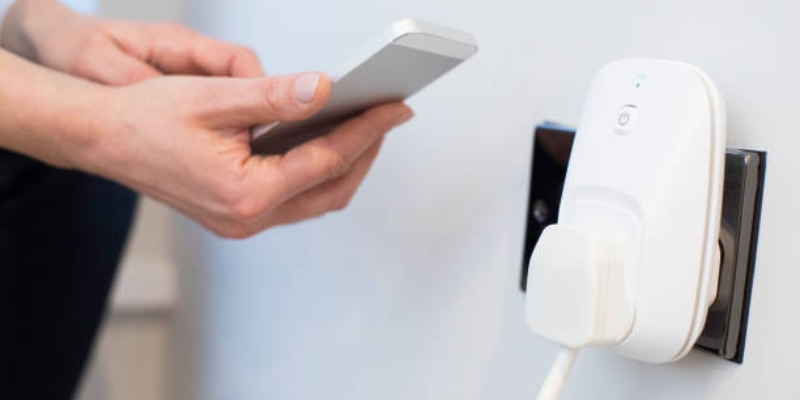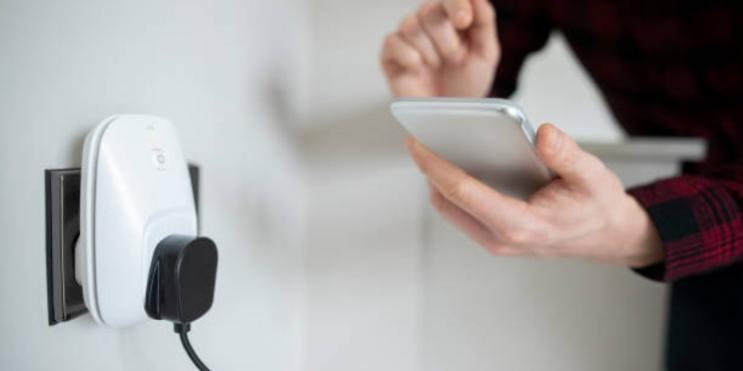How To Use Smart Plugs For Home Automation
Smart plugs are tiny gadgets that plug into a wall outlet. They allow people to control appliances and lights with a phone app. These plugs can be turned on or off remotely, which helps check them remotely during the setup period. They can follow schedules or work with voice assistants like Alexa or Google Assistant. Without replacing them, smart plugs can turn everyday objects "smart."
Getting Started: Setting Up Your Smart Plug
To begin, plug the smart plug into an outlet. Then, pair it with a Wi-Fi network via the brand's app. Many of the apps coach you through the process step by step. Once you're connected, name the plug to identify it (say, "Living Room Lamp") for future reference. Test it by turning the underlying plugged-in device on or off in the app. This arrangement suits lamps, coffee makers, TVs, and such.

Automating Daily Routines
Smart plugs can follow routines. For example, a coffee maker can turn on every morning at 7:00 a.m., or a lamp can switch off at midnight. Users can create these schedules in the app. Some apps let users set different times for weekdays and weekends. This feature helps save energy and makes life easier by reducing manual tasks.
Creating Scenes For Multiple Devices
Many smart plug apps let users control multiple plugs at once. A "movie night" scene could dim the lights, turn on the TV, and start a fan. All these actions happen with one tap. Scenes can also include voice commands. For example, saying "Movie time" could trigger the same actions automatically.
Managing Energy Usage
Smart plugs show how much energy a device uses, helping users find energy-hogging appliances. For instance, an old fridge might use more power than expected. Turning it off during peak hours can lower electricity bills. Some apps send alerts if a device uses too much energy, helping users save money and reduce waste.
Saving Money With Timers
Timers are useful for energy savings. A smart plug can turn off a space heater after two hours or a porch light at sunrise. Timers prevent devices from running unnecessarily, reducing energy bills over time. Some plugs even learn usage patterns and suggest savings tips.
Enhancing Home Security
Smart plugs can make a home look occupied when it's empty. Lamps or radios can turn on and off randomly, deterring burglars. Users can also get alerts if a plug detects unusual activity. For example, if a basement dehumidifier turns on unexpectedly, it might signal a water leak.

Using Smart Plugs While Travelling
Travellers can check if appliances are off while away. A forgotten iron can be turned off remotely. Or a pet owner can turn on a fish tank heater from afar. This peace of mind is a significant benefit. Some apps even let users share access with family or neighbours.
Voice Control And Integration
Most smart plugs work with voice assistants. Saying "Hey Google, turn off the bedroom lamp" works instantly. This is helpful for people with mobility issues or busy hands. Voice control also speeds up tasks. For example, asking Alexa to "start the morning routine" could open blinds, start coffee, and play music.
Connecting To Other Smart Home Devices
Smart plugs can work with other gadgets. For example, a motion sensor could trigger a lamp to turn on at night, or a smart thermostat could turn off a space heater when the room is warm enough. These integrations create a seamless smart home experience and reduce the need for extra devices.
Child Safety And Appliance Management
Parents can program bedtime for children's lamps or TVs. At 9 p.m., a smart plug can turn off the power to a gaming console. It can even restrict screen time by shutting off a TV after an hour. Dangerous appliances, such as hair straighteners, can be remotely switched off if left on for safety.
Troubleshooting Common Issues
If a smart plug disconnects, check the Wi-Fi signal. Move the router closer if needed. Reset the plug by unplugging it for 30 seconds. If the app won’t connect, update it or reinstall it. For voice assistant issues, re-link the app to the assistant. Most brands have customer support for extra help.

Advanced Uses For Smart Plugs
Some users get creative. A smart plug can power a fish tank filter during water changes. Or it can run a garage door opener only during the day. Others use plugs to charge electric toothbrushes overnight and stop charging at dawn. These ideas show how flexible smart plugs can be.
Choosing The Right Smart Plug
Look for plugs that work with existing devices. Some brands have better apps than others. Check if the plug supports voice control or energy monitoring. Outdoor-rated plugs are needed for patios or gardens. Always read reviews before buying.
Smart plugs are simple tools for modern homes. They save time, cut energy costs, and boost security. Planning allows anyone to turn their house into a smarter, more efficient space.